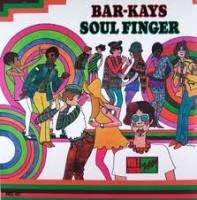
Funk’s advent was the result of a convergence of many musical events, a “perfect storm” precipitated by the coalescing of all the major postwar African-American musical forms, among them jazz, blues, r&b, and gospel. Like many other innovations in American popular music, it came into its own in the ’60s. Its evolution can be heard in the output of musicians from just about every major US city, but Detroit, Philadelphia, Memphis, and New Orleans (see below) were the real hotbeds of activity. But if there is one individual who can be seen as the form’s prime architect, it’s a man from Macon, Georgia by the name of James Brown. Accentuating rhythm above all else, and essentially making his backing band, the Famous Flames, a massive percussion instrument, the Godfather laid the groundwork for The Groove. This proto-Funk sound exists in some shape or form on just about all of his King Records releases from Papa’s Got a Brand New Bag onwards. But many of his peers were also throwing down. Here’s a short list.
 1. The Bar-Kays Soul Finger (1967) Though there are other great tunes in this assortment of instrumentals, its title track, with its thumping bass and blasting horns, is deservedly the standout. Even the record’s unavoidable association with one of the greatest tragedies in Soul music history—it’s the only one the original lineup recorded before three of its members perished with Otis Redding in a plane crash—can’t detract from its joyous groove.
1. The Bar-Kays Soul Finger (1967) Though there are other great tunes in this assortment of instrumentals, its title track, with its thumping bass and blasting horns, is deservedly the standout. Even the record’s unavoidable association with one of the greatest tragedies in Soul music history—it’s the only one the original lineup recorded before three of its members perished with Otis Redding in a plane crash—can’t detract from its joyous groove.
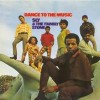 2. Sly and the Family Stone Dance to the Music (1968) This sophomore effort by the Bay Area psychedelic soulsters is where they really find their footing. Much more of a group effort than Sly’s later work, its melding of fuzzed-out guitar, stinging brass, life-affirming vocals, and the stellar basswork of one of funk’s greatest innovators, Larry Graham, ushered in a new era.
2. Sly and the Family Stone Dance to the Music (1968) This sophomore effort by the Bay Area psychedelic soulsters is where they really find their footing. Much more of a group effort than Sly’s later work, its melding of fuzzed-out guitar, stinging brass, life-affirming vocals, and the stellar basswork of one of funk’s greatest innovators, Larry Graham, ushered in a new era.
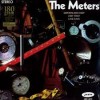 3. The Meters (1969) – No other city is as deserving of the title “The Cradle of Funk” as New Orleans. In the late ’60s, literally hundreds of artists in that city cooked up potent stews of tight grooves and fat beats, and the Meters were the undisputed head chefs. Their Allen Toussaint and Marshall Sehorn-produced debut features a smoking collection of instrumentals, including the original version of “Cissy Strut”, now a Funk standard.
3. The Meters (1969) – No other city is as deserving of the title “The Cradle of Funk” as New Orleans. In the late ’60s, literally hundreds of artists in that city cooked up potent stews of tight grooves and fat beats, and the Meters were the undisputed head chefs. Their Allen Toussaint and Marshall Sehorn-produced debut features a smoking collection of instrumentals, including the original version of “Cissy Strut”, now a Funk standard.
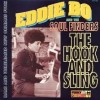 4. Eddie Bo and the Soul Finders The Hook and Sling (1997) Elsewhere in the Crescent City, this prolific national treasure, whose output spanned from the early 50s to just a few months before his death in 2009, unleashed one of early Funk’s catchiest numbers, “The Hook and Sling”—a sizable hit on the R&B charts in 1969. Every bit as much of an innovator as his peers, Bo unfortunately remained in their shadows for most of his career. Even stranger, he never managed to cut a full-length LP during this, his most important, period. This 1997 compilation serves as the next best thing.
4. Eddie Bo and the Soul Finders The Hook and Sling (1997) Elsewhere in the Crescent City, this prolific national treasure, whose output spanned from the early 50s to just a few months before his death in 2009, unleashed one of early Funk’s catchiest numbers, “The Hook and Sling”—a sizable hit on the R&B charts in 1969. Every bit as much of an innovator as his peers, Bo unfortunately remained in their shadows for most of his career. Even stranger, he never managed to cut a full-length LP during this, his most important, period. This 1997 compilation serves as the next best thing.
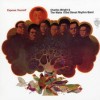 5. Charles Wright and the Watts 103rd Street Rhythm Band Express Yourself (1970) Seminal release by Charles Wright and the best incarnation of the Watts 103rd Street Rhythm Band. [Read full review here!]
5. Charles Wright and the Watts 103rd Street Rhythm Band Express Yourself (1970) Seminal release by Charles Wright and the best incarnation of the Watts 103rd Street Rhythm Band. [Read full review here!]
Further listening: Let’s face it: Funk is really a singles medium. It’s an unfortunate fact that many records from its golden era were hastily thrown together affairs. A typical LP might contain one or two amazing tracks scattered amongst some lackluster mid-tempo numbers and cheesy ballads. (Yes, we’re talking about you, James Brown!) This is where one can be thankful for the modern miracle called the compilation. The music industry initially was slow to recognize it as a genre fit for this type of (re)packaging, but by the mid-90s stylishly packaged funk compilations were a common sight in even mainstream record stores. Many of these are riddled with overplayed hits, so one is advised to dig deep. The Brits seem to do them the best. The London-based Soul Jazz Records sets the gold standard for comps and reissues. Their three volume New Orleans Funk series is an essential intro to some of the best music from Funk’s early days. Similarly, BGP’s Superfunk series is uniformly great. –Richard P


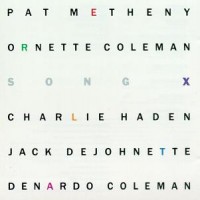
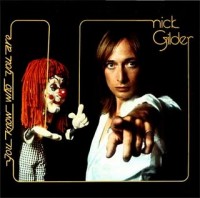
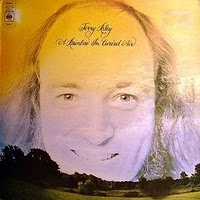 Future Holden Caufields, venturing out into the big bad city just two decades later, would have no need to feel so alienated — not with Central Park Be-Ins to take part in and Terry Riley’s A Rainbow In Curved Air providing the imaginary soundtrack. Riley’s LP – produced in ’67 once again by Music Of Our Time overseer David Berhman- is the most blatantly pop-friendly of all experimental albums up until Philip Glass’s Glassworks (the latter designed for an upscale yuppie audience which didn’t exist at the height of the Vietnam war.) No such compromises on Riley’s part–his loose, drony improvisations, heard here in gloriously overdubbed three dimensions, appealed to eager, young ears opened up by the raga craze and all sorts of other Eastern “space.” And despite his benign, hippie veneer, the composer didn’t neglect the dark side of Aquarius either, as the ominous psychedelic swirl of “Poppy Nogood & The Phantom Band,” with its dense overlay of reeds, organ and tape loops, demonstrates ad infinitum. –SS
Future Holden Caufields, venturing out into the big bad city just two decades later, would have no need to feel so alienated — not with Central Park Be-Ins to take part in and Terry Riley’s A Rainbow In Curved Air providing the imaginary soundtrack. Riley’s LP – produced in ’67 once again by Music Of Our Time overseer David Berhman- is the most blatantly pop-friendly of all experimental albums up until Philip Glass’s Glassworks (the latter designed for an upscale yuppie audience which didn’t exist at the height of the Vietnam war.) No such compromises on Riley’s part–his loose, drony improvisations, heard here in gloriously overdubbed three dimensions, appealed to eager, young ears opened up by the raga craze and all sorts of other Eastern “space.” And despite his benign, hippie veneer, the composer didn’t neglect the dark side of Aquarius either, as the ominous psychedelic swirl of “Poppy Nogood & The Phantom Band,” with its dense overlay of reeds, organ and tape loops, demonstrates ad infinitum. –SS Excluding the classic rock radio staple “Eminence Front” from 1982’s “It’s Hard,” the eighties weren’t terribly kind to The Who. At the time of “Face Dances” release, fans were still mourning the loss of Keith Moon while punk and emerging new wave were stealing press space and radio air-waves. It’s difficult to imagine now how proto-punkers like The Who couldn’t have easily coexisted alongside The Clash, but at the time they were considered almost polar opposites. (Long time Seattleites might remember both camp’s negative reaction at that disastrous double bill in the Kingdome in ’82). Listening now, though, and judged on it’s own merits, “Face Dances” is surprisingly enjoyable and this underdog of an LP finds its way onto my turntable and ipod more often than “Who’s Next.” “Face Dances” is definitely not in league with the aforementioned classic but neither has it been played to death for the last twenty-five years. Also, I now prefer a introspective Pete Townshend even if Roger Daltry still delivers his words with all the gusto of “Baba O’Riley.” For anyone who’s written this one off, pick up the next 99¢ copy you see and give it a fresh listen the way you might approach a Townshend or Entwistle LP. Not only does it contain some of Townshend’s finest (Don’t Let Go The Coat) and oddest lyrical moments (Did You Steal My Money, Cache Cache), it features the “quiet” Entwistle’s least quiet moment, “The Quiet One” along with everyone’s favorite guilty Who-pleasure, “You Better You Bet” and the album closer’s lost gem, “Another Tricky Day.” –David
Excluding the classic rock radio staple “Eminence Front” from 1982’s “It’s Hard,” the eighties weren’t terribly kind to The Who. At the time of “Face Dances” release, fans were still mourning the loss of Keith Moon while punk and emerging new wave were stealing press space and radio air-waves. It’s difficult to imagine now how proto-punkers like The Who couldn’t have easily coexisted alongside The Clash, but at the time they were considered almost polar opposites. (Long time Seattleites might remember both camp’s negative reaction at that disastrous double bill in the Kingdome in ’82). Listening now, though, and judged on it’s own merits, “Face Dances” is surprisingly enjoyable and this underdog of an LP finds its way onto my turntable and ipod more often than “Who’s Next.” “Face Dances” is definitely not in league with the aforementioned classic but neither has it been played to death for the last twenty-five years. Also, I now prefer a introspective Pete Townshend even if Roger Daltry still delivers his words with all the gusto of “Baba O’Riley.” For anyone who’s written this one off, pick up the next 99¢ copy you see and give it a fresh listen the way you might approach a Townshend or Entwistle LP. Not only does it contain some of Townshend’s finest (Don’t Let Go The Coat) and oddest lyrical moments (Did You Steal My Money, Cache Cache), it features the “quiet” Entwistle’s least quiet moment, “The Quiet One” along with everyone’s favorite guilty Who-pleasure, “You Better You Bet” and the album closer’s lost gem, “Another Tricky Day.” –David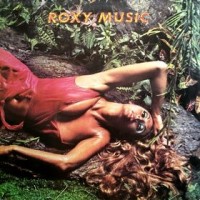

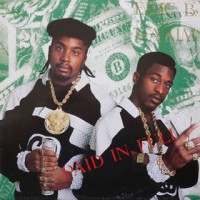
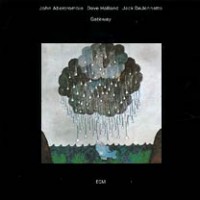
 1. Gateway Gateway (1975) Guitar trio set featuring John Abercrombie on guitar, the great Jack DeJohnette behind the drums, and Dave Holland on bass. This record covers everything from post-bop swing to abstract, sonic explorations. This is a criminally underrated guitar trio record, if not one of the best releases from ECM.
1. Gateway Gateway (1975) Guitar trio set featuring John Abercrombie on guitar, the great Jack DeJohnette behind the drums, and Dave Holland on bass. This record covers everything from post-bop swing to abstract, sonic explorations. This is a criminally underrated guitar trio record, if not one of the best releases from ECM. 2. Chick Corea , Dave Holland, Barry Altschul ARC (1971) Chick Corea on piano with Dave Holland on bass and Barry Altschul on percussion – Any fans of the classic piano trio should study this record, both lyrical and dissonant; it bridges the gap between free improv and structure.
2. Chick Corea , Dave Holland, Barry Altschul ARC (1971) Chick Corea on piano with Dave Holland on bass and Barry Altschul on percussion – Any fans of the classic piano trio should study this record, both lyrical and dissonant; it bridges the gap between free improv and structure.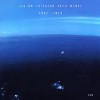 3. Julian Priester Love, Love (1973) An “electrocoustic” jazz/ funk session with tight horn arrangements, wah guitars, low-fi bass lines and eerie synth swells mingled with Latin flavored piano runs. This is a modern sounding, progressive record that still sounds fresh today-a Jive Time favorite.
3. Julian Priester Love, Love (1973) An “electrocoustic” jazz/ funk session with tight horn arrangements, wah guitars, low-fi bass lines and eerie synth swells mingled with Latin flavored piano runs. This is a modern sounding, progressive record that still sounds fresh today-a Jive Time favorite.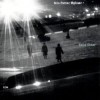 4. Nils Petter Molvær Solid Ether (2000) This is trumpet player Nils Petter Molvær’s second release by this project ; a stew of trumpet swirls, loops, guitars, and various electronics with programmed beats intertwined with live drums, along with gentle female vocal interludes. There’s also some sampling from DJ Strangefruit .
4. Nils Petter Molvær Solid Ether (2000) This is trumpet player Nils Petter Molvær’s second release by this project ; a stew of trumpet swirls, loops, guitars, and various electronics with programmed beats intertwined with live drums, along with gentle female vocal interludes. There’s also some sampling from DJ Strangefruit .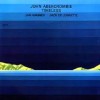 5. John Abercrombie Timeless (1975) Another trio record featuring John Abercrombie and Jack DeJohnette, only this time Jan Hammer on keyboards joins the fold. I had to include this spaced out fusion masterpiece. Frenetic drumming and fuzzed out guitar and organ washes create psychedelic soundscapes with funky breaks alongside tender acoustic guitar/piano duets. No Miami Vice theme here.
5. John Abercrombie Timeless (1975) Another trio record featuring John Abercrombie and Jack DeJohnette, only this time Jan Hammer on keyboards joins the fold. I had to include this spaced out fusion masterpiece. Frenetic drumming and fuzzed out guitar and organ washes create psychedelic soundscapes with funky breaks alongside tender acoustic guitar/piano duets. No Miami Vice theme here.
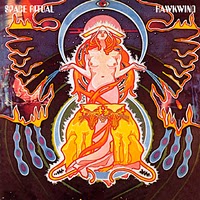 Rock made interstellar matter. A blessed stars collision makes possible this weird, antisocial record. A quite rancid and demodé spot that doesn’t resemble anything done before or after. A crash between the cave-like distortion and the outer space, mystic sounds. A search for God based on primitive rites. Pagans worshipping Nature, Fire, Elements, Cosmos. Ancient divinities, entities such as Sun Ra or Blue Cheer. A true astral projection, an initiation turn down to the depths of the Earth and up to the confines of the Universe. Excessive, saturated, vehement, foul and whimsical. At the antipodes of simplicity. And yet, it sounds basic and direct. A gloomy journey towards light. Guitars buried deep down in the mix, foregrounded bass and vocals and some occasional trumpets sounding like distant low-frequency signals. I’ve never found anything like this. An artificial album. A touched-up live which is a pure celebration of experience. It’s both YES and NO. An endless curl.
Rock made interstellar matter. A blessed stars collision makes possible this weird, antisocial record. A quite rancid and demodé spot that doesn’t resemble anything done before or after. A crash between the cave-like distortion and the outer space, mystic sounds. A search for God based on primitive rites. Pagans worshipping Nature, Fire, Elements, Cosmos. Ancient divinities, entities such as Sun Ra or Blue Cheer. A true astral projection, an initiation turn down to the depths of the Earth and up to the confines of the Universe. Excessive, saturated, vehement, foul and whimsical. At the antipodes of simplicity. And yet, it sounds basic and direct. A gloomy journey towards light. Guitars buried deep down in the mix, foregrounded bass and vocals and some occasional trumpets sounding like distant low-frequency signals. I’ve never found anything like this. An artificial album. A touched-up live which is a pure celebration of experience. It’s both YES and NO. An endless curl. 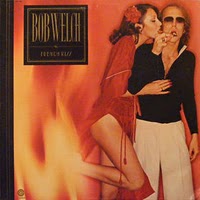 Following a brief affair with heavy rock on the pair of Paris releases, Bob Welch puckers up and lands a solo soft rock triumph on French Kiss. While some of that guitar crunch remains, it and Welch’s trademark baked goods vocals are wrapped in silky disco strings and dance floor beats throughout the mesmerizing French Kiss. The LP finds Welch as a post-hippie playboy on the prowl through irrepressible entries like the alluring “Ebony Eyes,” “Hot Love, Cold World,” and the Fleetwood/McVie/Buckingham assisted infatuation of “Easy to Fall” and “Sentimental Lady,” originally cut for the Mac’s Bare Trees. Elsewhere the disco-rockin’ “Carolene,” funky “Outskirts,” vintage Welch space-drifter “Danchiva” and sunny Claifornia dreamin’ duo of “Lose my Heart” and “Lose Your Heart” only serve to solidify the album’s appeal – rare is the seventies softie that never dips in quality, all while delivering the lounge lizard magic in such spot-on fashion as on French Kiss. –Ben
Following a brief affair with heavy rock on the pair of Paris releases, Bob Welch puckers up and lands a solo soft rock triumph on French Kiss. While some of that guitar crunch remains, it and Welch’s trademark baked goods vocals are wrapped in silky disco strings and dance floor beats throughout the mesmerizing French Kiss. The LP finds Welch as a post-hippie playboy on the prowl through irrepressible entries like the alluring “Ebony Eyes,” “Hot Love, Cold World,” and the Fleetwood/McVie/Buckingham assisted infatuation of “Easy to Fall” and “Sentimental Lady,” originally cut for the Mac’s Bare Trees. Elsewhere the disco-rockin’ “Carolene,” funky “Outskirts,” vintage Welch space-drifter “Danchiva” and sunny Claifornia dreamin’ duo of “Lose my Heart” and “Lose Your Heart” only serve to solidify the album’s appeal – rare is the seventies softie that never dips in quality, all while delivering the lounge lizard magic in such spot-on fashion as on French Kiss. –Ben